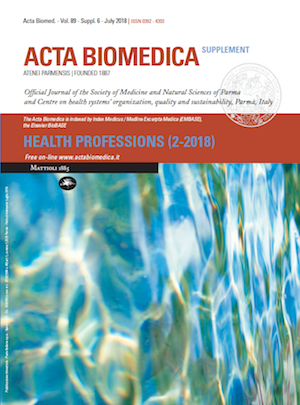Efficacy of the Buzzy System for pain relief during venipuncture in children: a randomized controlled trial.
Keywords:
venipuncture, children, procedural pain, Buzzy System, pain reliefAbstract
Background and aim of the work: procedural pain is a significant issue for paediatric patients. In particular, needle pain is amongst the most stressful for children. Studies revealed that a large number of children do not receive adequate pain prevention during the procedures. Neglecting the prevention of needle pain can cause several psychological effects such as anxiety and phobias, and increase perceptions of pain in the future. We aimed to verify the efficacy of Buzzy System in reducing pain during venipuncture. Methods: A randomized control trial was conducted among 72 children aged 3 to 10 years undergoing venipuncture. Children were randomly assigned to The Buzzy with distraction cards group (experimental group) or to “magic gloves” group (control group). Perception of pain was measured through the Visual Analogue Scale (VAS), the Wong-Baker Scale (WBS) and the Numeric Rating Scale (NRS). Results: Sixty-four children participated in the study, 34 in the experimental group and 30 in the control group. The experimental group showed significantly lower levels of pain (p=.039; 95% CI: -2,11; -0,06) in terms of the mean=3.65±2.011; median=3, compared to the control group (mean: 4.67±2.14, median=4). Caregivers were satisfied with the Buzzy System. Conclusion: The Buzzy System combined to distraction cards showed a greater reduction of perceived pain than “magic glove” technique. This study underlines the importance of active involvement of caregivers during procedural pain in children. Pediatric nurses have an important role in empowering children and caregivers to be interactive during venipunctures.
Downloads
Published
Issue
Section
License
This is an Open Access article distributed under the terms of the Creative Commons Attribution License (https://creativecommons.org/licenses/by-nc/4.0) which permits unrestricted use, distribution, and reproduction in any medium, provided the original work is properly cited.
Transfer of Copyright and Permission to Reproduce Parts of Published Papers.
Authors retain the copyright for their published work. No formal permission will be required to reproduce parts (tables or illustrations) of published papers, provided the source is quoted appropriately and reproduction has no commercial intent. Reproductions with commercial intent will require written permission and payment of royalties.







